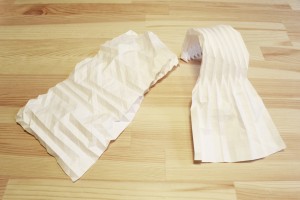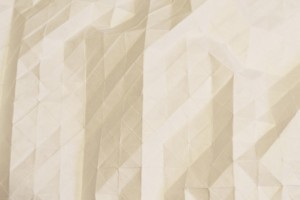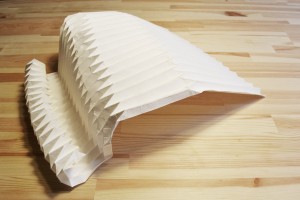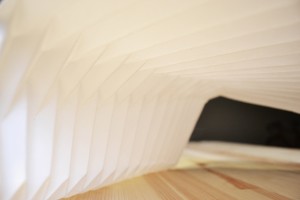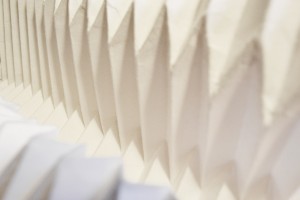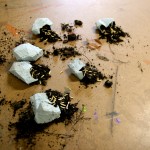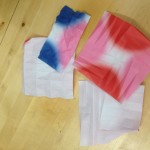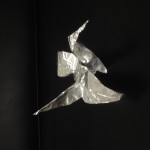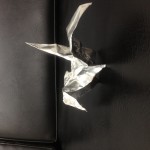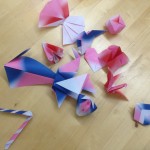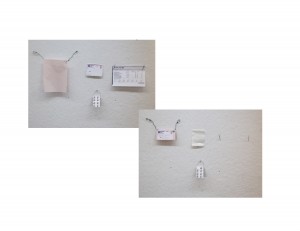


I’ve had a pen pal since summer of 2010, however last December I stopped responding due to the accumulation of tasks and busy work that consumed this past year of my life. I resorted to communicating with her in ways that seemed more expedient; however with that we lost an element that was characteristic of our friendship.
Being here brings me back to a state of compulsive list making and constantly attempting, and often failing to complete assignments. Rather than complete this project for a letter grade, I’ve decided to use it as a means to accomplish a personal task. The content of the envelope serves as an excuse for my delayed response, however the assignment being an incentive to respond ten months later demonstrates the still present importance of academic requirements over personal ones.
Materials:
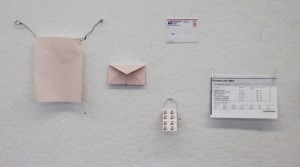
Rather than forward progress, I chose to represent a backwards progression. Beautiful gem or stone-like objects decay and fall apart. They spew the earth that they came from and will return to, while maggots aid in the process.
Raised in Korea, I’ve been very familiar with origami since I was a child. When the assignment was given, I tired to find the solution in the original form of origami and folding, and I realized that I am repeating something. I got a feeling that I was stuck, so i gathered all the origamis that i made for this project and tried to find the clue where i was stuck, and I realized that they were all made out of origami paper. I decided to change the material. I thought of many different materials and decided to use Aluminum foil, and chose a crane as a subject, because that is what I think the most basic definition of origami. The Foil Crane that I created theoretically should look stronger than paper crane, but it actually looks more fragile because of its tangibility.
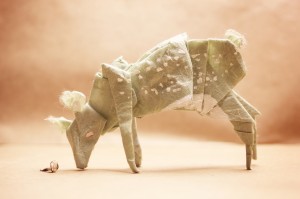
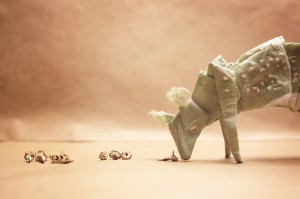
In thinking about progress, I was immediately attracted to the process of analyzing the progress we have made in order to predict the behavior of things to come.
(more…)
Many of the 3d models you find in Google 3D Warehouse and Thiniverse will be too complex for folding.
This article describes a technique for reducing the number of polygons in the mesh. It involves downloading a free program called MeshLab (available for OS X and Windows). Follow these steps:
- Download the model in SketchUp format from the 3D
- Open the model in Rhino, Export the file as a “.obj” file (just as you do for opening it in Pepakura)
- Open the .obj file in MeshLab and follow the instructions in the above article
- Save the new/reduced mesh as “.obj” and continue wtih this file in Papakura
With this technique, I was able to take this model of a hand from the Google 3d Warehouse

and reduce it to this:

Which I was then able to unfold with Pepakura, far more reasonably:

Some seriously gorgeous furniture design by Elisa Strozyk:

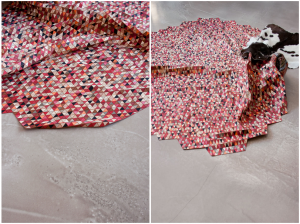
Can we all get an appreciative ‘damnnnnn’ for this?
Her site is here. Check it.
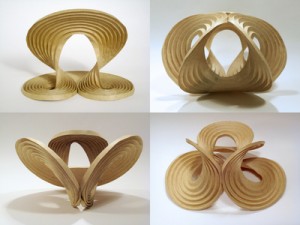
Some interesting resources I came upon discussing the creation of curved origami surfaces:
http://www.graficaobscura.com/huffman/index.html
Some examples of and directions for creating basic curved elements
http://graphics.stanford.edu/~niloy/research/folding/folding_sig_08.html
Informative page on modelling the behavior of curved paper or fabric
Robert J Lang talks about his artistic process as an origami artist:
Some examples of origami replacing other soft materials in clothing and fashion:
http://tinyurl.com/8jp68g3
http://tinyurl.com/9o3hb2j
Trying my hand at folding bluebirds:

Simple instructions: http://www.origami-fun.com/origami-bird.html

